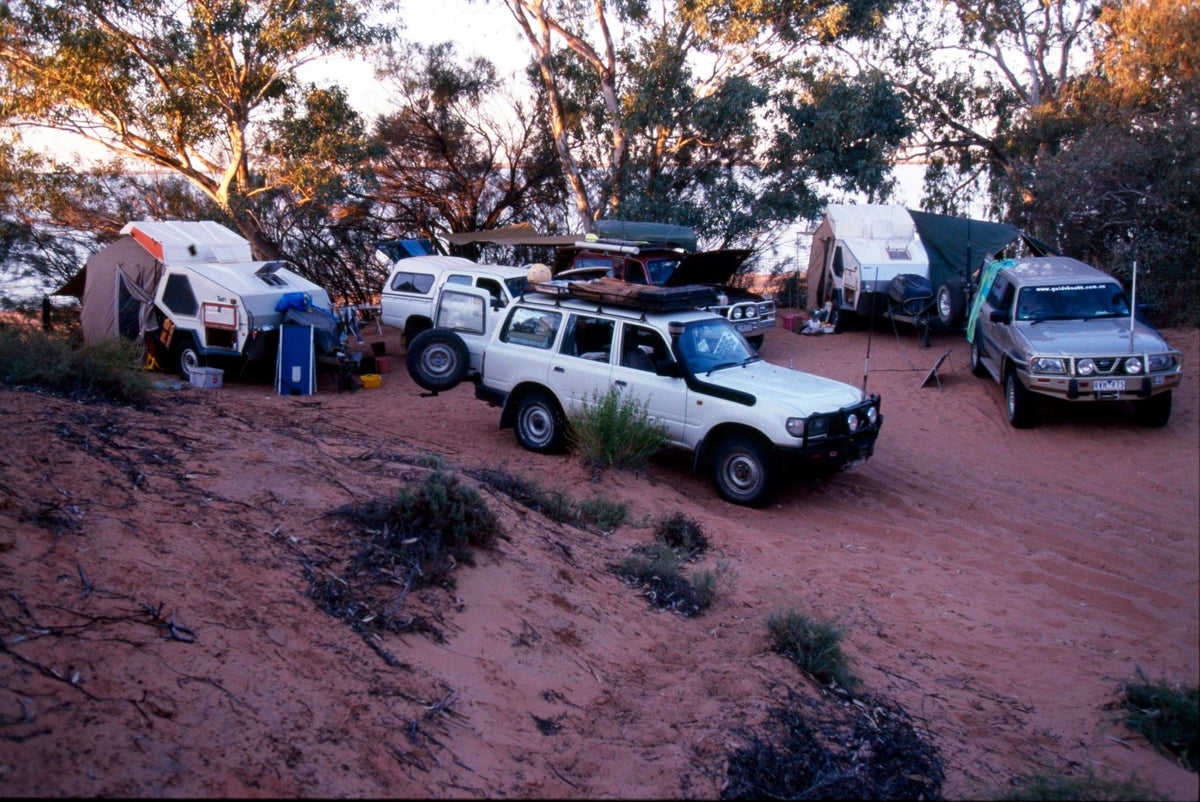
Coongie Lakes: A Desert Oasis
|
|
Time to read 2 min
|
|
Time to read 2 min
As I write this, in between back-to-back crossings of the Simpson Desert and a quick trip to Cape York, I've heard that the Coongie Lakes, north-west of Innamincka, are again full, which is wonderful news. It's been a long time since the lakes, a veritable oasis in the surrounding parched country, have been full and they are a sight to see when they are jam-packed with water and alive with birds.
Just a few days ago as part of my second crossing of the Simpson in a fortnight, I was standing on the edge of another, but lesser known desert wonderland at Kudaree Waterhole, which is currently a vast lake filled by the flood waters that came down the Eyre Creek.
I've been lucky enough to visit Kudaree a few times in the last 30 years. I’ve seen it before in its current state – brimming with water and life – but I’ve also seen it parched and dry. It's not a particularly easy place to visit as it’s on private station land and you need permission of the land owner at Adria Downs, north-west of Birdsville, to access the region. Most people visit it as part of their Madigan Line Crossing of the Simpson Desert, but right now and for the next few months or so, it would be worth taking the trouble to travel to this remote area just for the incredible sight the overflowing waterhole has to offer.
But back to the Coongie Lakes.
Right now the access road from Innamincka to the lakes is closed due to the same flood that brought the life-giving water to the parched lake bed. That will change in the near future so I'm thinking on my way back from the Cape I'll take a bit of a detour and head out to the lakes, just to get my feet wet on some damp desert sand.
The last time I was there was back in 2002 when Coongie had plenty of water but the waters were slowly receding. The place was absolutely buzzing with birds and while pelicans were the most obvious and in their hundreds (maybe thousands), there were a host of other species including swans, herons, egrets, brolgas and various ducks.
Malkumba-Coongie Lakes National Park now protects this watery wonderland and the lakes are a listed Ramsar Wetland of international importance. I’m glad to say they’re properly recognised as a significant feeding, resting and breeding area for some 205 species of birds that migrate to the region when the lakes have water in them.
Of course, it’s not just birds that call this place home during these rich times; fish and frogs are major inhabitants that help feed the myriad birds, while reptiles of many shapes and forms can be found in the surrounding landscape. Insect-eating bats will often be seen flitting through the lights of a camp and occasionally a kangaroo will grace the scene with its presence. Smaller marsupials are also in residence but it takes a practiced eye and a lot of patience to spot them.
River red gums flourish where water is near permanent. Coolabah trees form open woodlands in places. Sand hill wattle and narrow leaf hop-bush deck the sandy ridges.
I remember the contrast between the red dunes that crowd the southern edge of the lake and the waters of the lake that lap the shore; it was magical, made even more stunning in the early morning or later afternoon light. Mind you, the water was shallow and even a hundred metres from shore it was just 30-50cm or so deep.
The park is a true wilderness. Motorboats, camp fires, pets, fishing and generators are not permitted, which may be a pain to some, but tends to keep all but the keenest campers and lovers of nature away from the place. If you have a canoe all the better. If this sounds good to you, I recommend going to the SA National Parks and Wildlife Service website, booking a campsite (there are no facilities apart from a dunny), and taking a trip which you'll always remember.